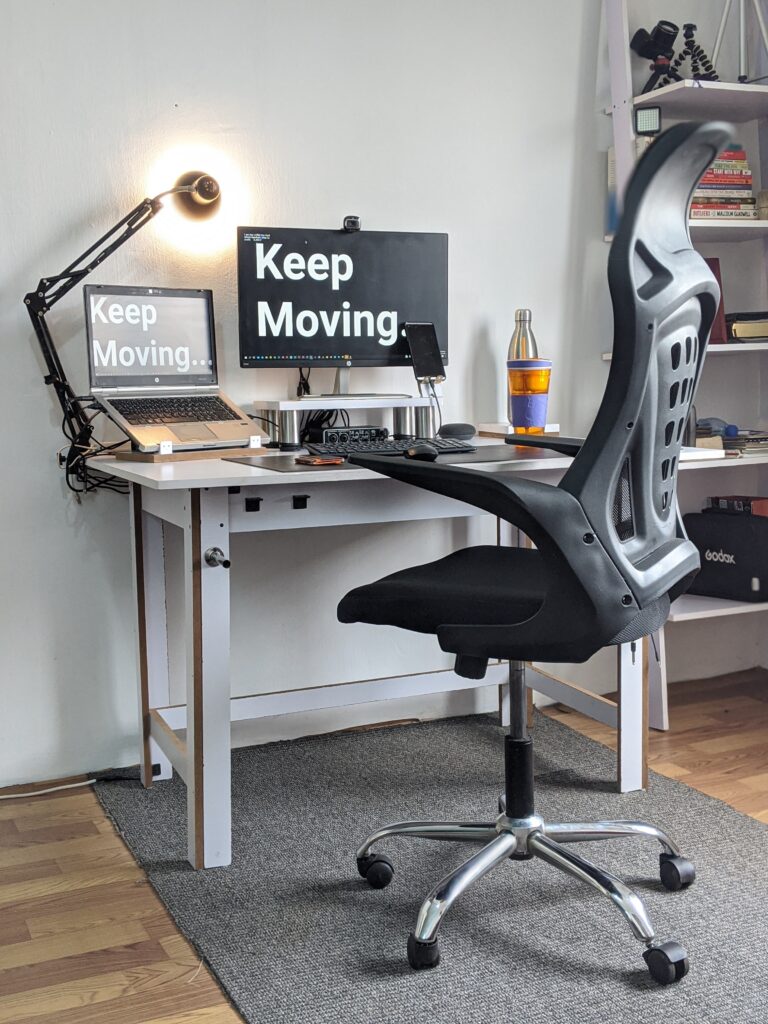The Most Important Action To Improve Your Ergonomics
Are you tired of constantly battling with nagging back and neck pain? Do you find yourself struggling to maintain comfort and productivity throughout your workday? Look no further than the transformative power of ergonomics. This groundbreaking concept holds the key to unlocking relief and creating a healthier, more sustainable approach to your daily activities.
In this article, we will delve into the world of ergonomics, exploring its profound impact on alleviating back and neck pain. We will uncover the fundamental principles and practical strategies that can help you optimize your workspace, improve posture, and minimize the strain on your body. From the proper alignment of your chair and desk to the essential role of regular movement and posture changes, we will equip you with the knowledge and tools to transform your environment and experience true relief.
Discover how a mindful approach to ergonomics can empower you to take control of your well-being, enhance productivity, and bid farewell to the persistent discomfort that has plagued you for far too long. Let’s embark on this journey together and unlock the secrets of ergonomics for a pain-free and healthier lifestyle.
Consider Your Posture
Which of these postures is will cause body aches and pains?




When examining these photos, some may argue that the last photo represents the best posture. It is characterized by a relatively straight back, unrounded shoulders, and the absence of excessive forward head flexion. This position is also known as the 90-90-90 position as the elbows, hips and knees are all at 90 degree angles. Contrary to popular belief, this position puts a lot of strain on the low back due to all the muscles contracting to hold this position. In contrast, the first photo shows torso rotation to view the laptop, the second photo depicts a person resting their legs on the table with full back support, and the third photo exhibits crossed legs and a forward-flexed spine. These aspects should be taken into account when considering posture and its impact on muscle and joint stress.
In reality, any posture, regardless of its initial appearance, can become problematic if maintained for prolonged periods. The key is to avoid static positions and regularly cycle through different postures. By spending around 15 minutes per hour in each posture, there isn’t sufficient time for significant musculoskeletal creep to develop, which often leads to discomfort and pain associated with prolonged sitting.
Studies such as “Effects of Dynamic Sitting on Musculoskeletal Strain in Individuals with a Sedentary Work Style” by O’Sullivan, K., et al. (2012) provide evidence that frequent posture changes can reduce musculoskeletal strains and discomfort. While there is no fixed duration for switching postures, it is important to listen to your body’s signals and recognize when strain is setting in. A general guideline is to change your position every 20-30 minutes to maintain a healthy and comfortable posture.
What is Creep?
Muscle creep, also known as muscle fatigue or muscle strain, refers to the gradual and progressive elongation or deformation of muscles over time due to sustained or repetitive contraction. Generally after a long trip in a car or airplane, you will feel the effects of creep on your neck or lower back. It commonly occurs when muscles are held in a fixed or strained position for an extended period, such as during prolonged sitting or repetitive movements. Muscle creep can lead to discomfort, stiffness, and reduced muscle performance (this is why it is not ideal to exercise after a long trip without a proper warm up). It is often associated with poor ergonomics, inadequate support, or repetitive tasks that place excessive strain on specific muscle groups. To prevent muscle creep, it is important to take regular breaks, practice proper ergonomics, and engage in stretching and strengthening exercises to maintain muscle flexibility and strength.
How to Create An Environment to Change Posture
Enhancing Your Workstation Ergonomics: Practical Considerations for Optimal Setup
In this section, we will provide you with a comprehensive checklist of ideas to optimize your workstation setup. The key aspect to prioritize is the ease and convenience of implementing these changes. Consider the following factors:
- Accessibility and Ease of Adjustment: When choosing ergonomic equipment, such as a sit-to-stand desk, evaluate how effortless it is to modify its position. If the desk requires manual lifting and locking of each component, it may become cumbersome over time. Opt for desks with user-friendly mechanisms, like a simple button click, to facilitate effortless adjustment and enhance the likelihood of utilizing this beneficial feature.
- Consistency in Ergonomics: It is essential to prioritize both your home workstation ergonomics and workplace ergonomics. Ensure that the adjustments and enhancements you make are applicable and feasible across different work environments. Consistency in ergonomic principles and equipment will contribute to your overall well-being and comfort, regardless of the setting.
By considering the convenience and practicality of implementing workstation modifications, you can enhance both your home and workplace ergonomics, leading to improved productivity and overall well-being.
Ergonomic Chair Checklist
Key Features of an Ergonomic Office Chair for Optimal Comfort and Support:
- Stable Base: Ensure the chair has a five-prong base with feet at least as large as the seat itself, providing stability and preventing tipping.
- Adjustable Seat Height: Look for a chair with adjustable seat height, typically ranging from 42 to 51 cm for standard height, or 38 to 45 cm for low height, to accommodate different body sizes and preferences.
- Breathable Seat Cover: Choose a chair with a breathable seat cover that allows air circulation, and ensure the seat has no more than 2.5 cm of compression to provide optimal support.
- Ergonomic Seat Pan: The seat pan should be spacious enough to support your thighs comfortably, while avoiding excessive length that could compress the area behind your knees. It should also feature a rounded, downward-curving “waterfall” front edge for improved blood flow. Adjustable tilt options, such as a 3° forward-down and 4° back-up tilt, can further enhance comfort.
- Supportive Backrest: Look for a chair with an adjustable lumbar support feature to maintain proper spinal alignment. The upper edge of the backrest should be at an appropriate height, and the chair should offer an adjustable angle within the range of 93-113° to accommodate different sitting positions.
- Adjustable Armrests: Choose a chair with height-adjustable armrests that allow you to find the right position to support your arms comfortably. The armrests should be at least 18 cm in length and positioned at least 15 cm back from the seat edge. They should not hinder computer work or the chair’s positioning, and removable armrests may be preferable for some individuals.
- Optional Footrests: Depending on personal preference and tasks performed, footrests can be beneficial to provide support and reduce strain on the legs and feet.
- User-Friendly Adjustments: It is essential for workers to have the ability to adjust and change the chair’s settings on their own, as different tasks and demands may require varying seating positions.
By selecting an office chair that incorporates these key features, individuals can optimize their comfort, support, and overall well-being during long hours of work.
If you’re considering some ergonomic chairs, here is my list of chairs comparing least expensive to most expensive.
Desk
Considerations for Choosing an Ergonomic Desk Setup:
- Adjustable Height: Opt for a split-level desk that allows you to modify the heights of your screen and keyboard independently, enabling proper alignment and reducing strain on your neck and wrists.
- Compatibility with Adjustable Chair, Footstool, and Monitor: If you have an adjustable chair, footstool, and monitor, a fixed desk can be suitable. Ensure the desk’s height and dimensions are compatible with the adjusted positions of these elements to create a comfortable and ergonomic setup.
- Sufficient Leg Room: Pay attention to the leg room available under the desk. Ensure the desk provides:
- Horizontal knee space of at least 43 cm (deep)
- Horizontal toe space of at least 60 cm (deep)
- Vertical clearance of at least 68 cm from the top of your knees to the bottom of the desk (including keyboard tray, if applicable)
- Leg space width of at least 50 cm
- Sit-to-Stand Desk Option: Consider using a sit-to-stand desk that allows you to switch between sitting and standing positions. This promotes postural changes throughout the day, reduces the risk of prolonged sitting, and provides opportunities to work while standing, which can benefit overall health and comfort.
By considering these factors, you can create an ergonomic desk setup that supports proper posture, comfort, and productivity during your work hours.
Timer/Reminders
Whether you find yourself in the workplace, school, or at home, it’s crucial to prioritize frequent postural changes for optimal musculoskeletal health. One effective method is to set a timer or utilize a dedicated app to remind you to switch your position every 20-30 minutes. This simple yet powerful reminder serves as a valuable tool to combat the tendency to remain in one posture for extended periods.
By incorporating timed position changes into your routine, you can break the cycle of prolonged sitting or static postures, reducing the risk of musculoskeletal issues over time. Remember, a small reminder can make a significant impact on your overall well-being. Take proactive steps to promote healthy posture and enjoy the long-term benefits of a more dynamic and comfortable workstation experience.




Interesting read hope life is going great for you Coby.